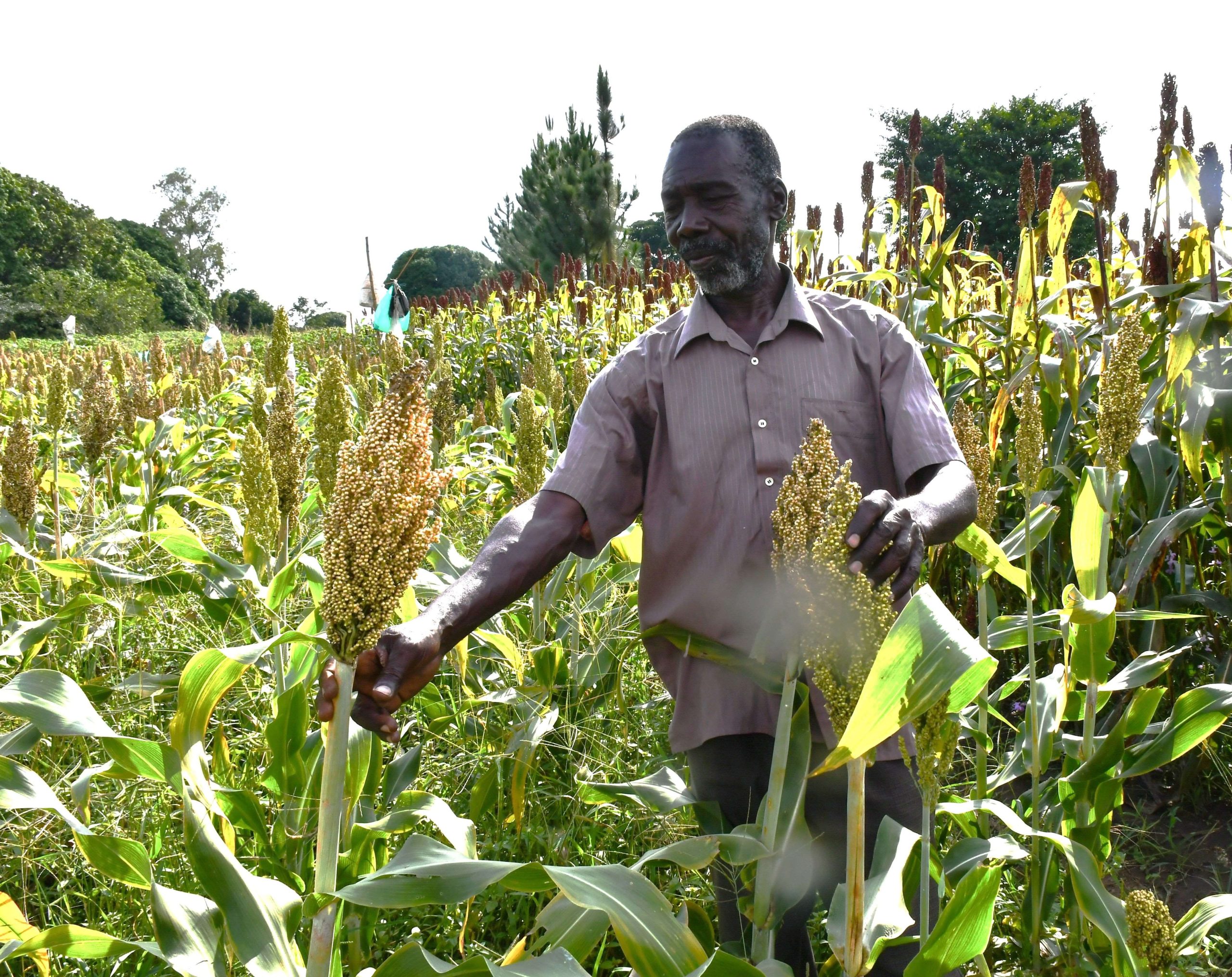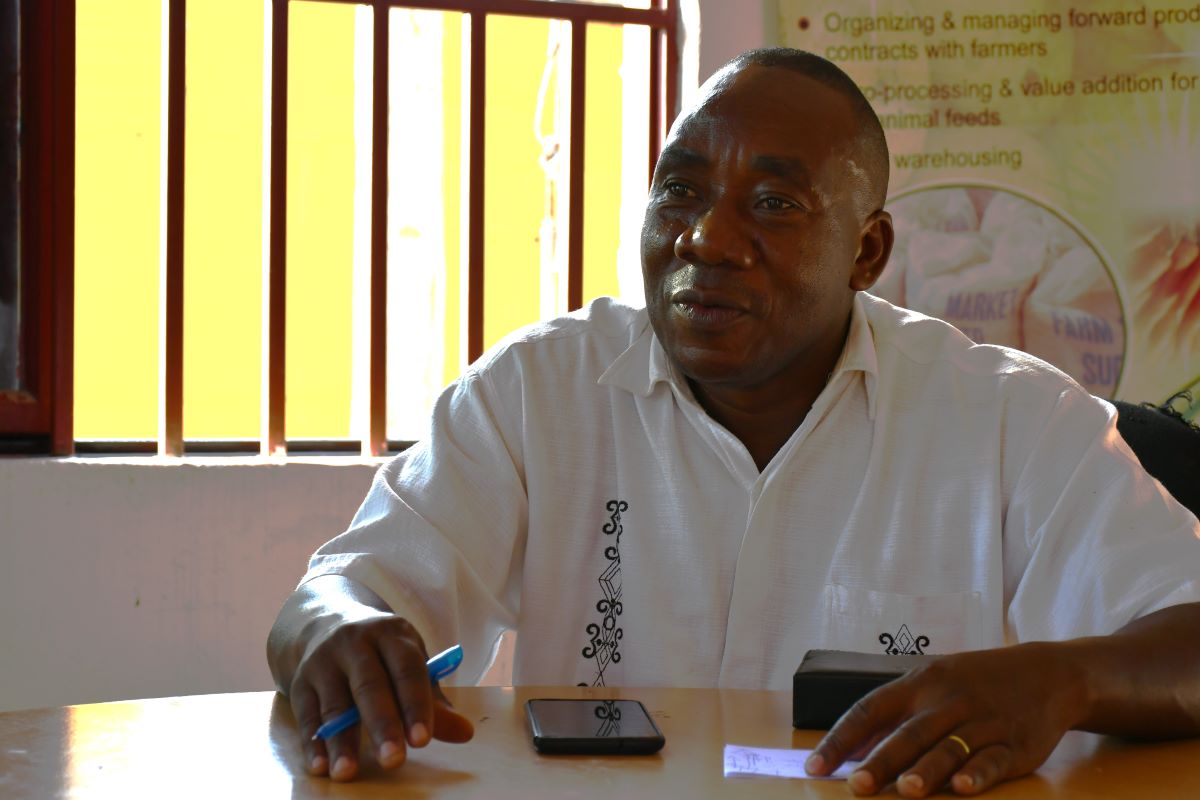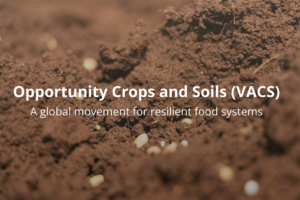CIMMYT, in partnership with the National Semi-Arid Resources Research Institute (NaSARRI), is transforming dryland farming by giving farmers access to drought-tolerant and disease-resistant crop varieties. Through the Accelerated Varietal Improvement and Seed Systems in Africa (AVISA) project, many farmers have not only improved their yields but also built resilience to the challenges of unpredictable rainfall. Dennis Obua, a farmer who has benefited from these research advances, shares his inspiring journey to promote improved finger millet and groundnut seed varieties within his community.
“My name is Dennis Obua, a farmer from Tewayo village in Lira district. I began my farming journey back in 2018, inspired by the local farmers I met while visiting a nearby region. As I spent time with them, observing how they tilled the land, I felt a strong urge to get involved in farming myself—especially focusing on drought-tolerant cereals, which are crucial in our region due to inconsistent rainfall.
It all started with a small amount of finger millet seeds—just a handful that I obtained from NaSARRI. At the time, some visitors from NaSARRI had planted a few experimental plots nearby. One of my friends was conducting his own trials, so I approached him and asked for a small sample of seeds to plant on my farm. That was how I started growing improved finger millet varieties NAROMIL 2 and SEREMI 2 (U15). Now, I not only grow millet, but I am also actively promoting it in my community.
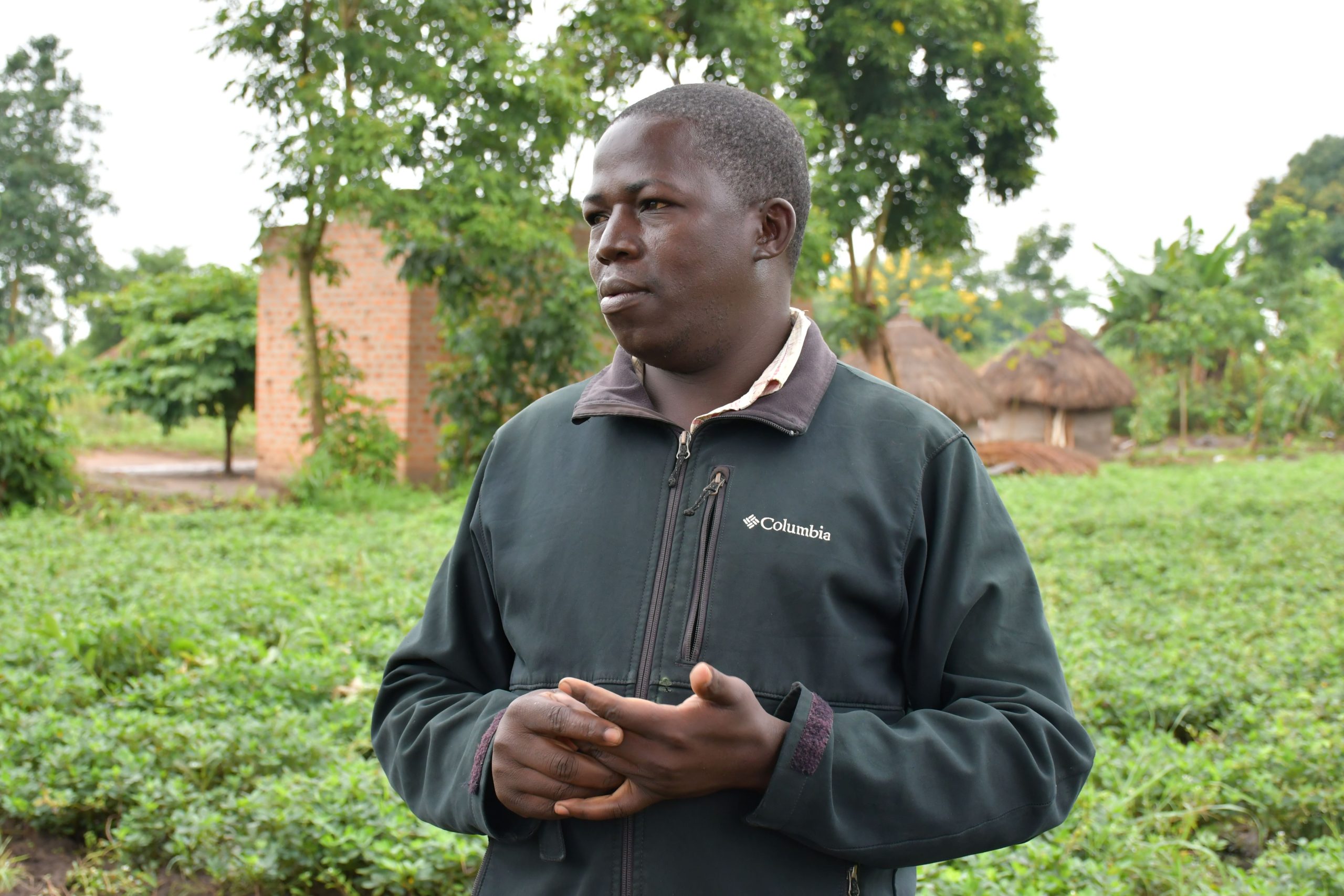
If you look around today, you will see that many people here have started growing finger millet here too. It’s becoming quite popular. In fact, recently, some researchers from Makerere University came to our village to look for finger millet, and I took them to a nearby home where they’re doing their own research on finger millet and sorghum.
More and more people are getting into farming now, especially finger millet, because it’s proving to be profitable. I’m really grateful for the way things have turned out. It’s incredible to see that something that started with just a small handful of seeds has grown into something so significant for our community.
Alongside finger millet, I also plant groundnuts. Currently, I have three different varieties planted in neat rows: SERENUT 8R, SERENUT 11, and SERENUT 14. Before these varieties were introduced to my farm, I used to grow a local variety called Red Beauty. We would get the seeds from our local market or sometimes travel to town to buy them but often these seeds didn’t germinate well, so we started relying more on local farmers who save seeds from one season to the next. That’s how we accessed it. That’s how we got access to them. We also have auctions here at the beginning of the season where farmers bring seeds to sell.
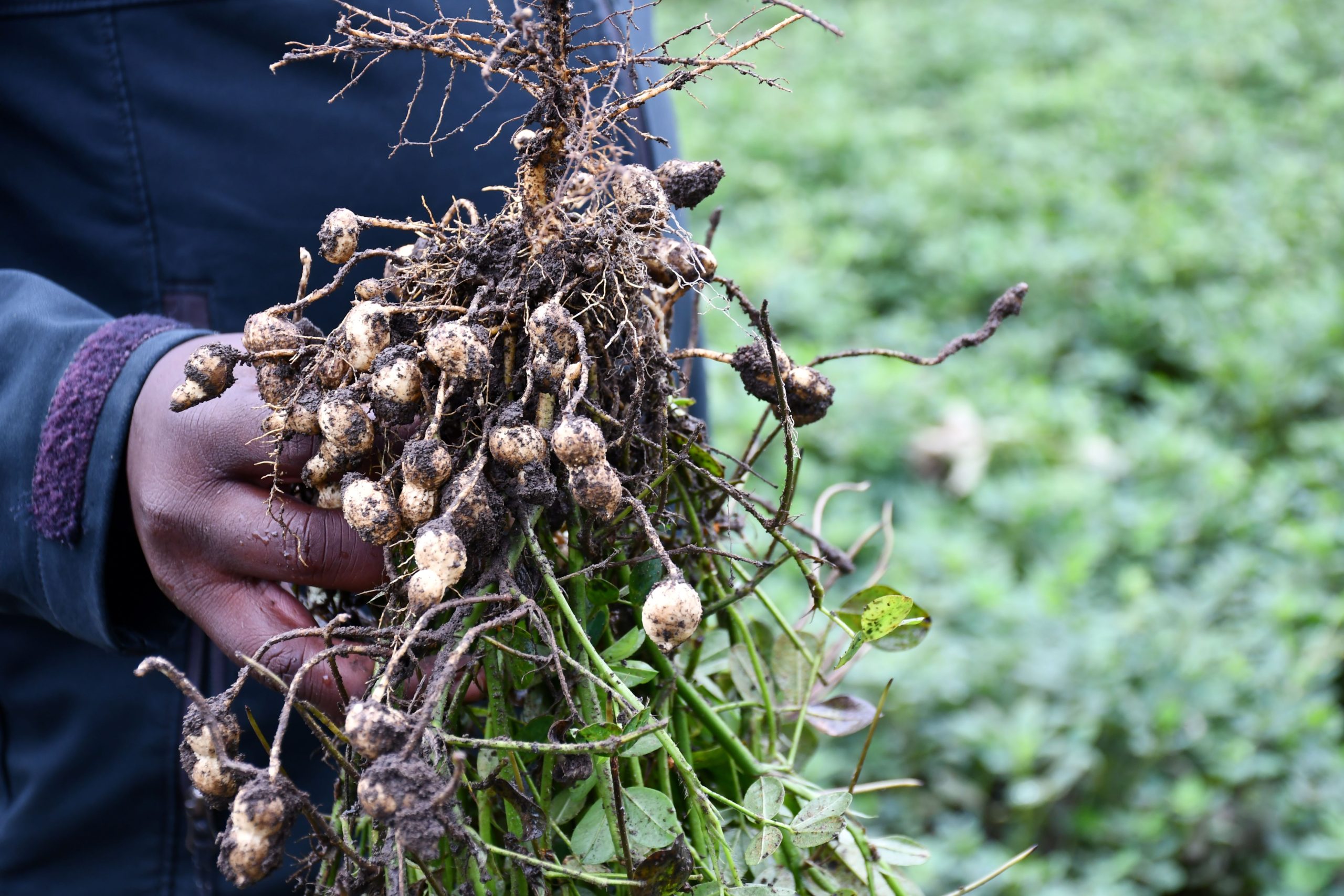
However, since switching to these new varieties— SERENUT 8R, SERENUT 11, and SERENUT 14 —I’ve seen a significant difference. Among the three, SERENUT 14 is my favorite. I’ve been growing it for several seasons now. It’s drought tolerant, disease resistant, and produces a good yield. It also has a good number of pods. When I plant it, I can usually harvest 14 to 16 bags per acre, with each bag weighing between 42 to 46 kilograms. Compared to SERENUT 8R, which yields slightly less—around 12 to 14 bags per acre— SERENUT 14 performs better in our soil conditions.
What I appreciate most about SERENUT 14 is that it’s also more resistant to rot and rosette disease. While SERENUT 11 and SERENUT 8R varieties are also drought tolerant, SERENUT 14 has proven to be the most reliable, making it my preferred choice. When you consider yield, disease tolerance, and quality, SERENUT 14 stands out.
I am proud to say that I’m not the only one growing these improved varieties anymore. Many farmers in my village have adopted them because I’ve been giving them seeds, and they’ve seen the benefits for themselves. Now, they too are switching to these improved varieties of groundnut and finger millet. The two finger millet varieties I have been growing are NAROMIL 2 and SEREMI 2 (U15) and they are also catching up. Among them, NAROMIL 2 is my preferred variety because it yields well, is drought tolerant, and has a great taste — perfect for food. Before this, we only grew our local finger millet varieties. This is the first time we’ve been introduced to these improved varieties.
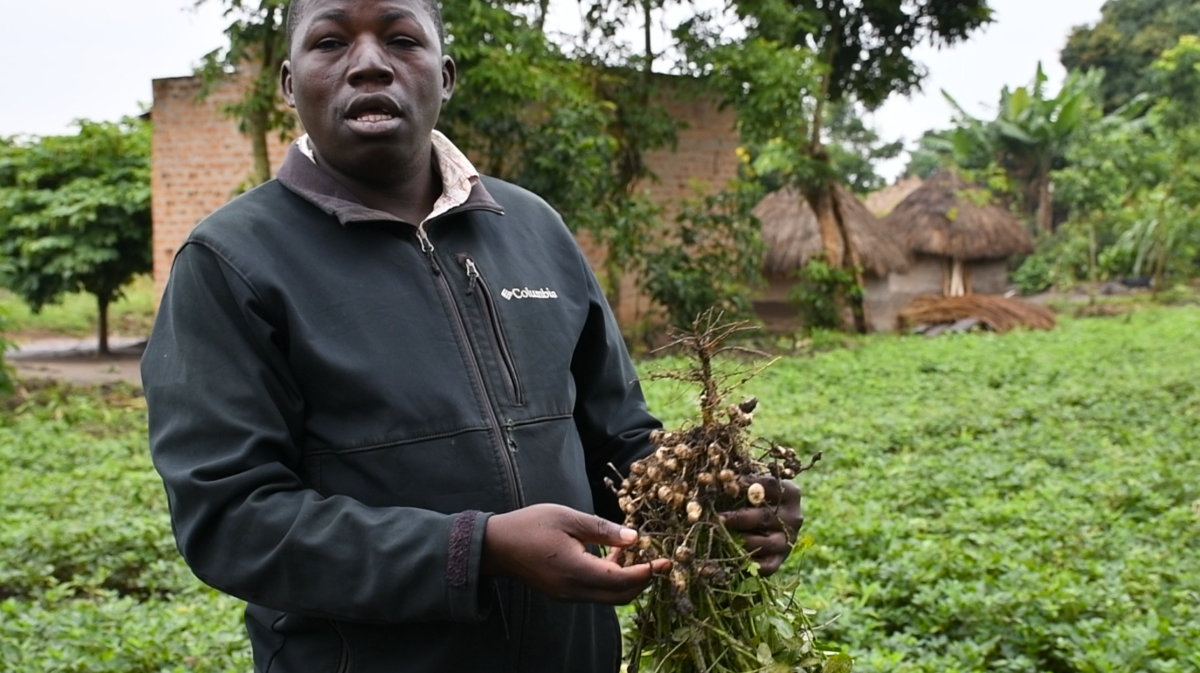
Farming has allowed me to give back to my community. It’s amazing to see how the success of one farmer can affect an entire village. More farmers now understand the importance of using quality seeds that are not only drought-tolerant but also disease-resistant. They come to me for seeds because they trust the results they’ve seen.
That’s not to say there haven’t been challenges. There was one week where we had heavy rains after a long dry spell, which caused some of the groundnut plants to rot. Before that, there had been no rain after planting, although we had managed to do the initial weeding. I’m sure the yield would have been even better if the rains had been more consistent. Despite the challenges, the yield has still been great. That’s one of the reasons I like these varieties—they’re resilient.
I am grateful for the knowledge and experience I have gained. By sharing what I’ve learned, I hope to help more farmers in my community succeed, just as I have. I’ve seen first-hand how improved varieties of both finger millet and groundnuts can transform farming practices. The combination of drought tolerance, disease resistance, and high yield has made a significant difference to my farm’s production, and I’m hopeful that more farmers will continue to adopt these crops.”
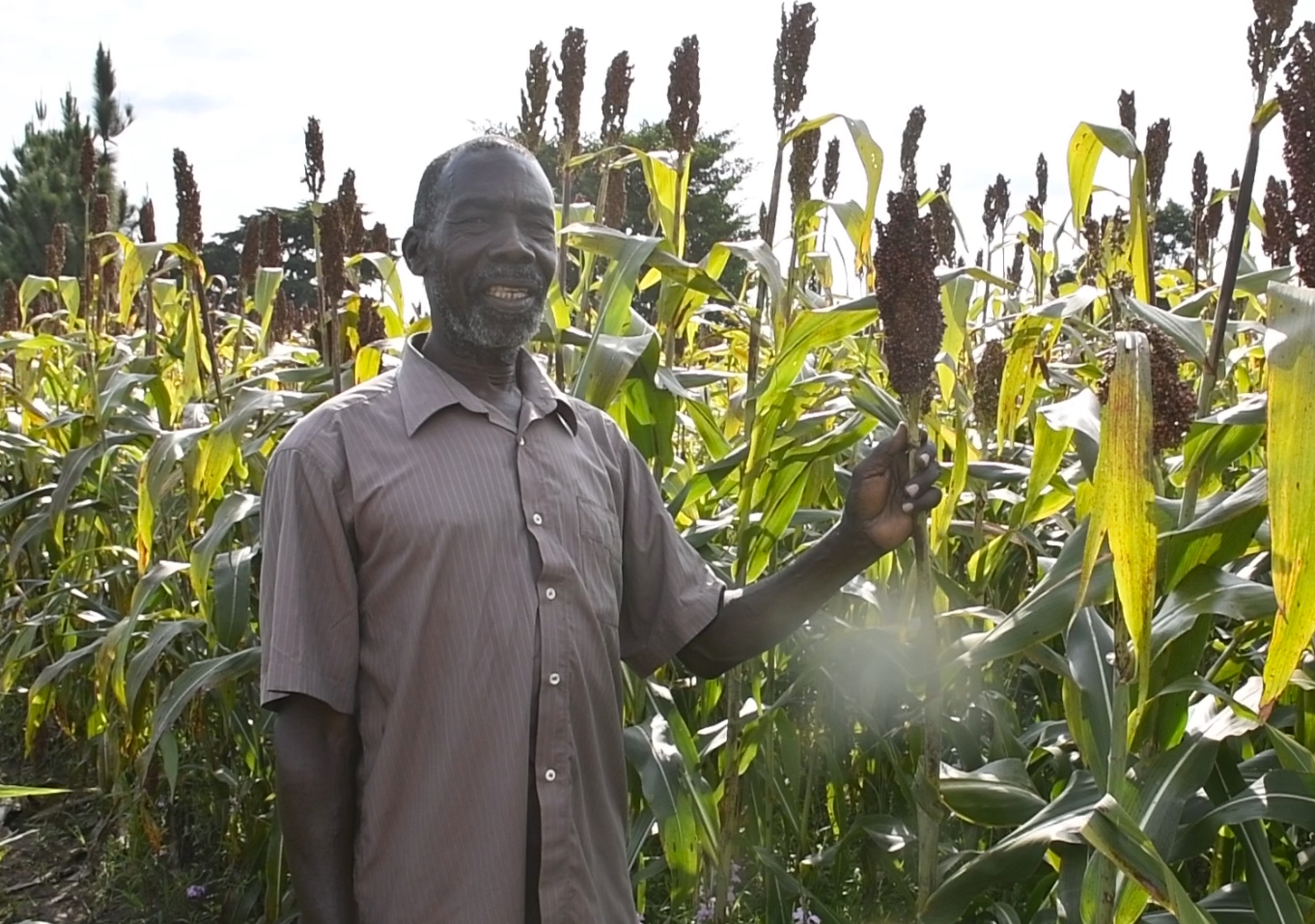
 Capacity development
Capacity development 